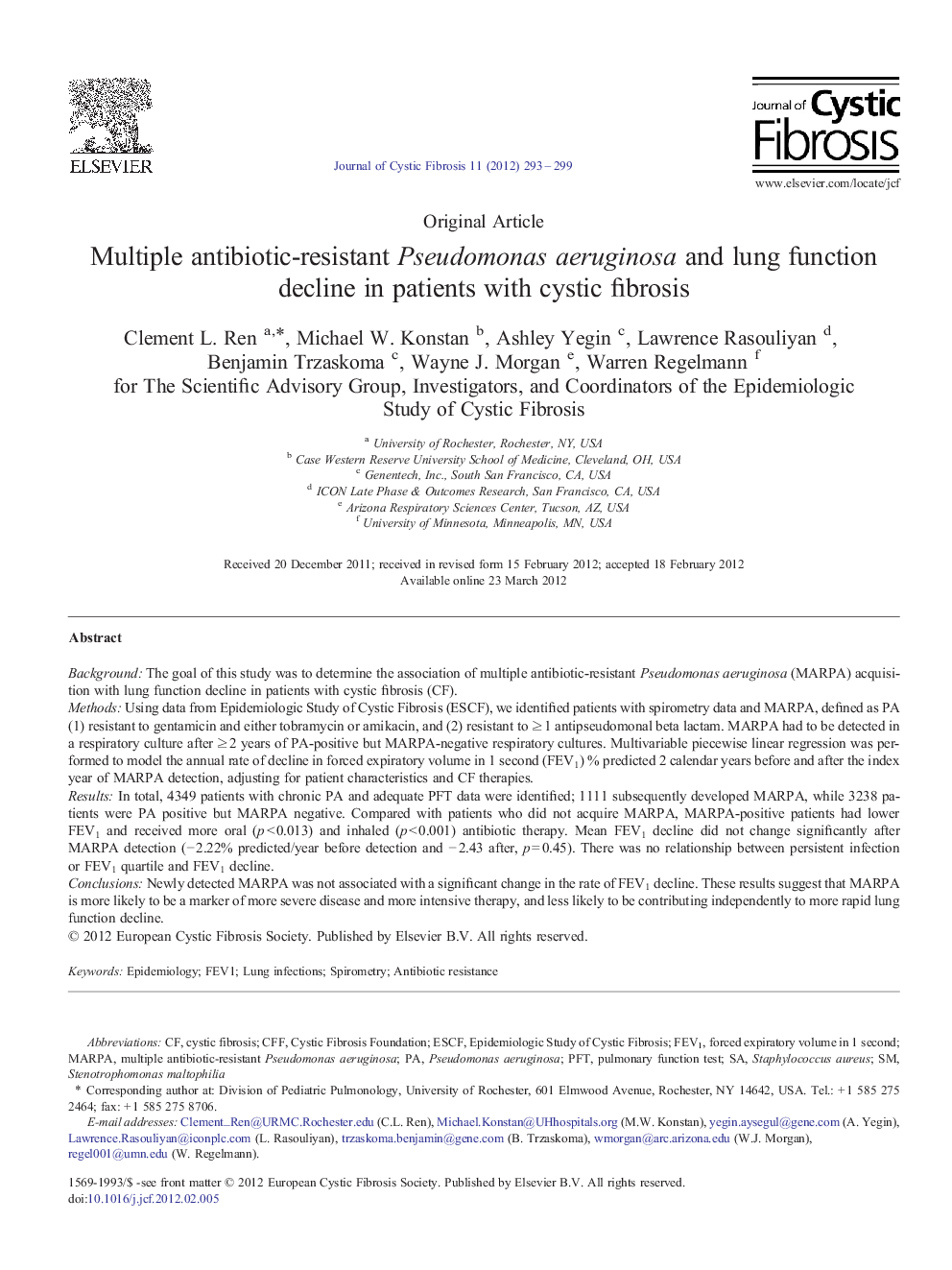| Article ID | Journal | Published Year | Pages | File Type |
|---|---|---|---|---|
| 6240984 | Journal of Cystic Fibrosis | 2012 | 7 Pages |
BackgroundThe goal of this study was to determine the association of multiple antibiotic-resistant Pseudomonas aeruginosa (MARPA) acquisition with lung function decline in patients with cystic fibrosis (CF).MethodsUsing data from Epidemiologic Study of Cystic Fibrosis (ESCF), we identified patients with spirometry data and MARPA, defined as PA (1) resistant to gentamicin and either tobramycin or amikacin, and (2) resistant to â¥Â 1 antipseudomonal beta lactam. MARPA had to be detected in a respiratory culture after â¥Â 2 years of PA-positive but MARPA-negative respiratory cultures. Multivariable piecewise linear regression was performed to model the annual rate of decline in forced expiratory volume in 1 second (FEV1) % predicted 2 calendar years before and after the index year of MARPA detection, adjusting for patient characteristics and CF therapies.ResultsIn total, 4349 patients with chronic PA and adequate PFT data were identified; 1111 subsequently developed MARPA, while 3238 patients were PA positive but MARPA negative. Compared with patients who did not acquire MARPA, MARPA-positive patients had lower FEV1 and received more oral (p < 0.013) and inhaled (p < 0.001) antibiotic therapy. Mean FEV1 decline did not change significantly after MARPA detection (â 2.22% predicted/year before detection and â 2.43 after, p = 0.45). There was no relationship between persistent infection or FEV1 quartile and FEV1 decline.ConclusionsNewly detected MARPA was not associated with a significant change in the rate of FEV1 decline. These results suggest that MARPA is more likely to be a marker of more severe disease and more intensive therapy, and less likely to be contributing independently to more rapid lung function decline.
